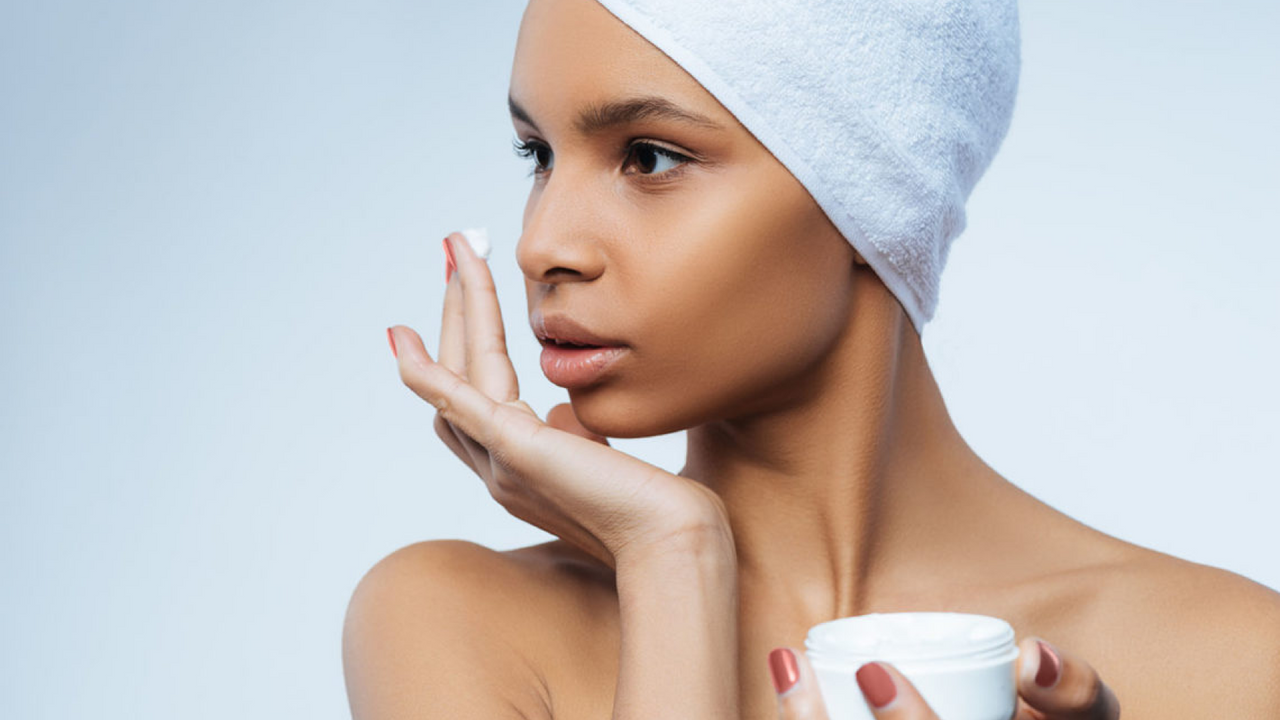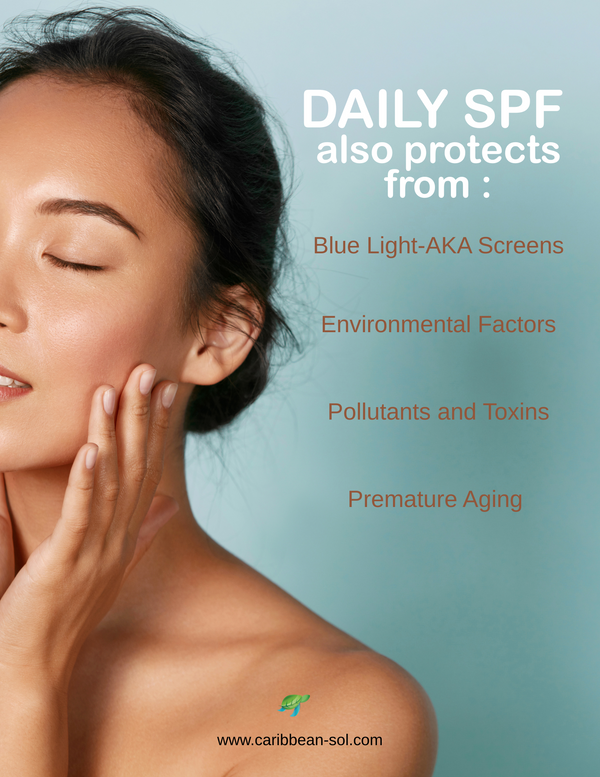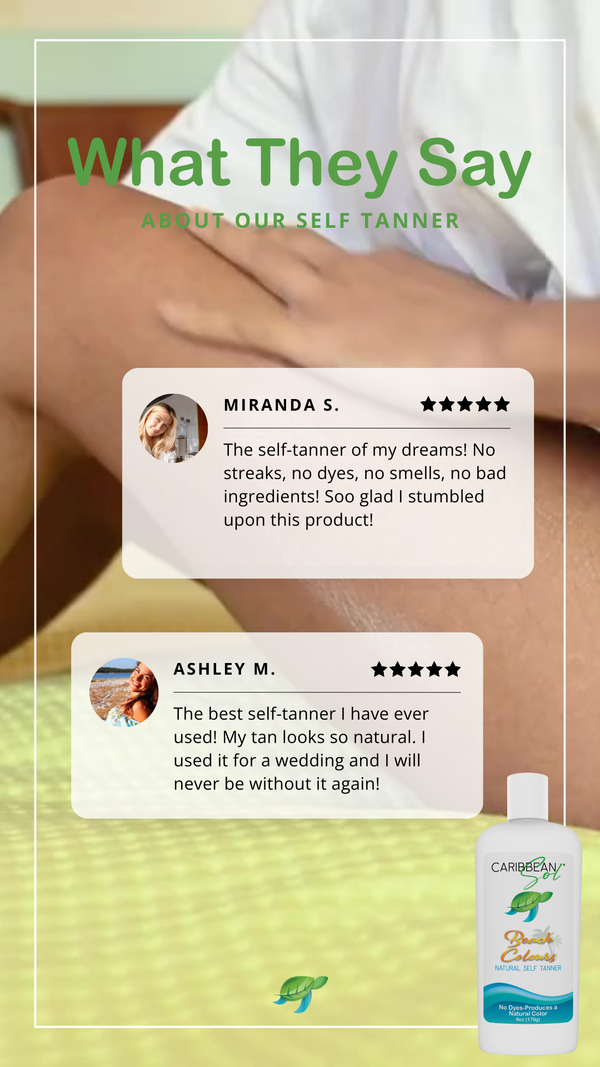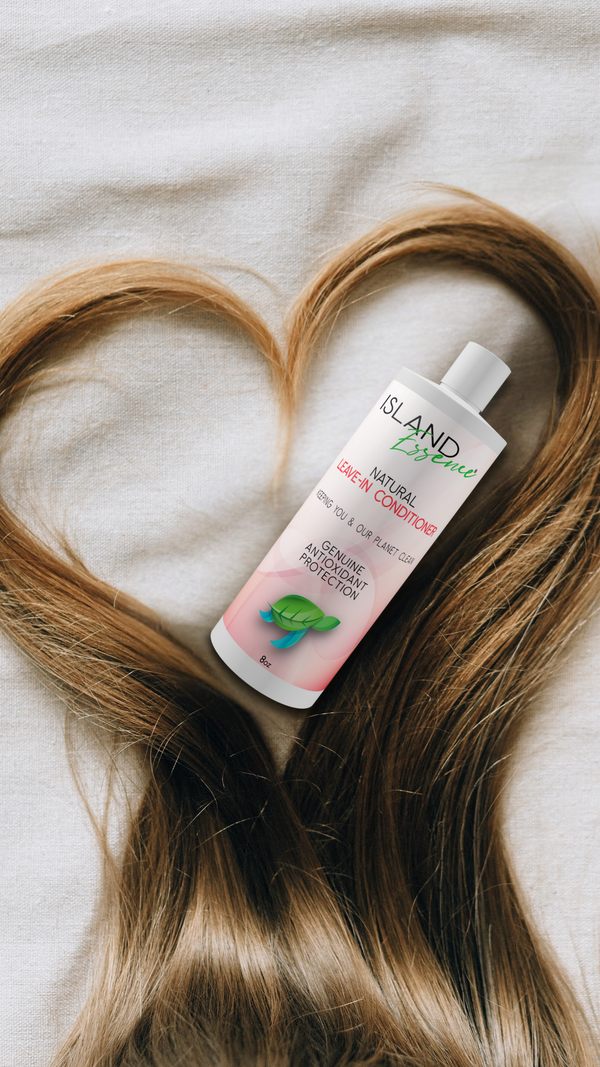Have you made the change to mineral sunscreen and chosen to stop using chemical based sunscreen products? Congratulations! We firmly believe that you will never look back as you choose all-natural sun protection while emphasizing the health of you and the environment. Now that you’ve chosen all-natural sun protection, knowing how to apply mineral sunscreen is important.
Caribbean Sol mineral sunscreens contain non-nano zinc which is a known as a physical blocker of UVA/UVB rays. Physical blocking means that the minerals do not penetrate the skin, but instead sit on top of the skin as a protective barrier against the sun’s harmful rays. This is in contrast to chemical sunscreens which absorb into your skin in order to provide sun protection.
So how should you apply mineral sunscreen appropriately? Does it work differently than applying chemical based sunscreens that you might be more used to? Let’s get into 5 specific tips that will help you know how to apply mineral sunscreen:
5 things to know about how to apply mineral sunscreen
- A little bit goes a long way– Consider using a pea or dime sized amount at a time. Then, gently brush the sunblock similar to how you might apply moisturizer. By going with the gentle approach, the mineral sunscreen will blend in better with your skin and you’ll see less “white.” Avoid a vigorous rubbing in or a “quick slap” of mineral sunscreen on your skin.
- Don’t be bothered by some visibility– While some people that are new to mineral sunscreens might be hesitant because of the slightly white look of the sunscreen, it’s important to realize that while blended in, some visibility is normal and indicative of pure zinc as the active ingredient in your sunblock. “Transparent zinc” might offer a less “white” look, but it is not as natural as pure zinc.
- Water resistant is not the same as water proof– While mineral sunscreen is water resistant, like any other sunscreen, it must be re-applied every 80-90 minutes especially after sweating, swimming and/or drying off with a towel. Since mineral sunscreens sit on top of your skin, drying off with a towel can remove some of the sunscreen and leave you susceptible to sunburn. Be sure to re-apply in these situations.
- Apply mineral sunscreen 15 minutes before going out into the sun– If you wait and do not apply sunscreen until you’ve already started to turn pink, then it’s too late. Be sure to apply the sunscreen prior to going out into the sun. This will ensure proper skin protection.
- Take the necessary time to cover all exposed skin before going out into the sun– Use the pea or dime sized amounts and blend it in all over your exposed skin. Do this until you’ve got a thin, evenly spread layer of sunscreen. It should be mildly visible and thus help you know if you’ve got that area of your body protected.
Note that even with properly applied sunscreen, it might make sense to avoid direct sun during peak hours of sun exposure (often in the 10am – 2pm time period). Additionally, utilizing layers of clothing at times can be smart in addition to the applied sunblock. Note that clothing can rub off some of the sunscreen, however, so if you put on clothes, be sure to re-apply sunscreen when shedding those layers of clothing.
When learning how to apply mineral sunscreen, it might take a few times to get used to the proper amounts of sunblock to apply. Moreover, new users might not be used to having some white coloring remain after applying it. While chemical sunscreens that you can spray on transparently can indeed be convenient, we encourage you to opt instead for a product that won’t harm your body or the environment. Mineral sunscreens with non-nano zinc are a healthy choice for you and your family!
As a reminder, the FDA is currently investigating the common ingredients in widely used chemical sunscreens, and the American Academy of Pediatrics (AAP) has advised against using sunscreens which contain oxybenzone on children as well as pregnant women. Additionally, recent studies have shown that these same chemicals are having a harmful effect on marine life and coral reefs. Mineral based sunscreens are non-toxic for both you and the environment.
Frequently asked questions
Which is better: mineral or chemical sunscreen?
While both sunscreens can block harmful UV rays, mineral sunscreens use all-natural ingredients to block harmful UV rays whereas chemical sunscreens have ingredients that are absorbed into your skin to provide sun protection. The FDA is currently investigating the potential harmful effects of common ingredients in chemical sunscreens and multiple studies have shown that these same ingredients are harmful to the environment.
What is physical sunscreen?
Mineral sunscreen is also referred to as physical sunscreen since it sits on top of the skin and reflects the sun’s harmful rays. The sunscreen forms a physical barrier to the sun’s rays. This is in contrast to chemical sunscreens in which chemicals are absorbed into your skin in order to provide sun protection.
Can you use mineral sunscreen on children?
Of course! In fact the American Academy of Pediatrics (AAP) has advised against using chemical sunscreens with oxybenzone on children since it is believed that children’s bodies are absorbing the chemical into the blood stream. Mineral sunscreens are a great, non-toxic alternative for sun protection.
For quick Application tips, follow our easy guide below!





